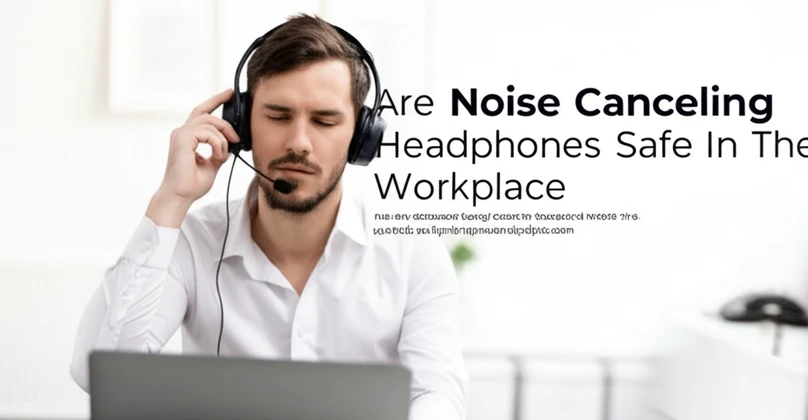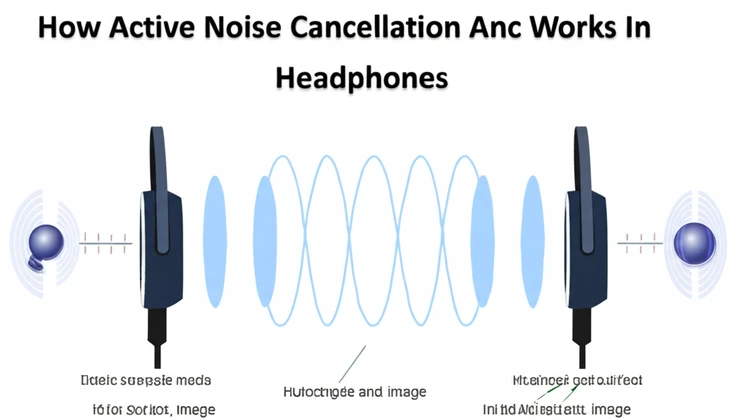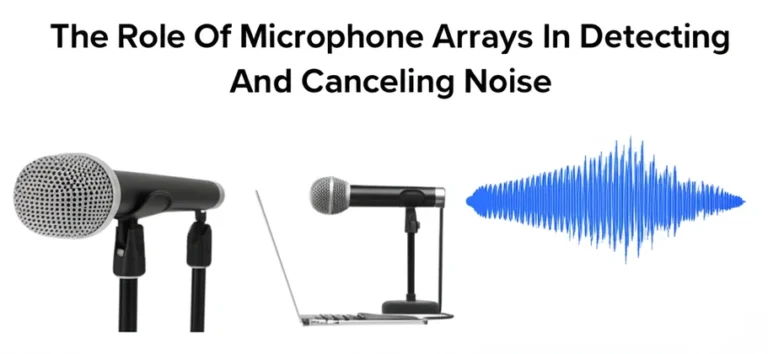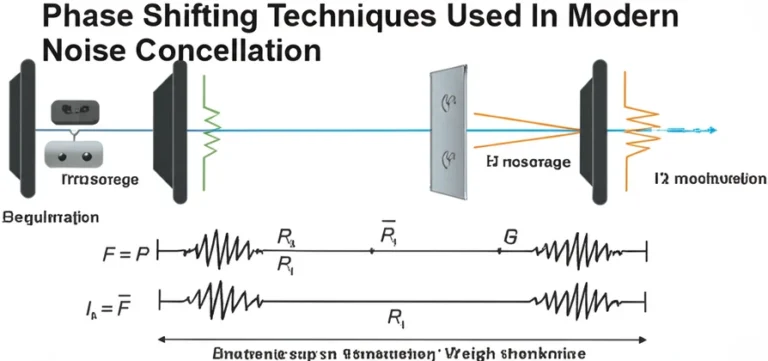
Are noise-canceling headphones safe in the workplace? It’s a question many employees and employers grapple with, as these devices offer both significant benefits and potential risks.
This article explores the advantages and disadvantages of using noise-canceling headphones at work, providing practical advice and actionable strategies for safe and effective implementation.
Benefits of Noise-Canceling Headphones in the Workplace
Enhanced Concentration and Focus
Noise-canceling headphones create a quieter personal workspace by actively reducing ambient sounds. This can lead to improved concentration and productivity, especially in distracting environments. Studies have indicated that reducing background noise can significantly improve focus and reduce errors.
For example, a study published in the Journal of Environmental Psychology found that workers in open-plan offices experienced a 20% improvement in focus and a 15% reduction in errors when using noise-canceling headphones.
- Open Offices: Minimize distractions from conversations and movement in collaborative spaces, leading to more focused work. For instance, a software developer working in an open-plan office can use noise-canceling headphones to block out surrounding conversations and focus on coding.
- Remote Work: Block out household noises, such as children playing or pets, during virtual meetings and focused work sessions. Imagine a remote worker taking a client call from home; noise-canceling headphones can help ensure the call remains professional and uninterrupted.
Protection Against Noise-Induced Hearing Loss (NIHL)
In industrial settings with high noise levels, prolonged exposure can lead to noise-induced hearing loss (NIHL).
Noise-canceling headphones can reduce the risk of NIHL by attenuating harmful sounds. By creating a quieter environment, they also encourage users to listen at lower volumes compared to regular headphones, further protecting their hearing. They are most effective against continuous, low-frequency noises.
- Industrial Applications: Help workers meet occupational safety standards by reducing exposure to loud machinery and other hazardous noise sources.
For example, factory workers operating loud machinery can benefit from the hearing protection provided by noise-canceling headphones.
- Extended Use: Promote safer listening habits by minimizing the need to increase volume to overcome background noise. This is particularly helpful for call center employees who spend hours on the phone and could be exposed to high noise levels over time.
Stress Reduction
Constant background noise can contribute to stress and fatigue. By creating a more peaceful environment, noise-canceling headphones can promote mental well-being and reduce stress-related health issues.
Research indicates that prolonged exposure to noise can elevate cortisol levels (the stress hormone), while quieter environments can promote relaxation and improve overall mood. For example, a study published in the journal Stress found a correlation between chronic noise exposure and increased cortisol levels in office workers.
Potential Risks of Noise-Canceling Headphones at Work
Reduced Situational Awareness
While blocking out distractions can be beneficial, it also poses safety risks in environments where situational awareness is crucial. Failing to hear critical auditory cues can lead to accidents or other dangerous situations.
For example, according to the National Safety Council, thousands of workplace accidents annually are attributed to distractions, and reduced situational awareness due to headphone use can contribute to this.
- Construction Sites: Missing warning shouts from coworkers, backup alarms from heavy machinery, or emergency sirens can be life-threatening. Imagine a construction worker wearing noise-canceling headphones who fails to hear the warning shout of a colleague about a falling object.
- Healthcare Settings: Overlooking subtle patient cues, such as changes in breathing or faint alarm signals, could compromise patient care. A nurse wearing noise-canceling headphones might miss a subtle change in a patient’s breathing pattern, potentially delaying critical intervention.
Over-Isolation
Extended use of noise-canceling headphones can lead to feelings of isolation and disconnect from team interactions.
This can negatively impact collaboration, communication, and team cohesion. For example, if a team member consistently wears noise-canceling headphones during collaborative work sessions, they might miss out on important discussions and feedback.
Physical Discomfort
Improperly fitted headphones can cause ear fatigue, pressure, and discomfort, especially during prolonged use. This can diminish their effectiveness and even lead to headaches or other physical issues.
For example, wearing over-ear headphones that are too tight can lead to pressure headaches.
Best Practices for Safe Use of Noise-Canceling Headphones
Adjust Usage Based on Environment
- High-Risk Areas: Avoid using noise-canceling headphones in environments requiring constant auditory vigilance, such as construction sites, manufacturing floors, or areas with moving vehicles. These are environments where hearing approaching vehicles or warning signals is essential for safety.
- Controlled Spaces: Use them intermittently in quieter environments like offices, taking breaks to reconnect with your surroundings and colleagues. For instance, use them during focused work sessions but remove them during team meetings or breaks to facilitate communication.
Choose the Right Headphones
Select headphones with features that prioritize safety and comfort:
- Adjustable Noise Cancellation: Choose models with adjustable levels of noise cancellation, allowing you to control the amount of ambient sound you hear.
Some models offer a feature to adjust the level of noise cancellation based on the surrounding environment.
- Transparency Modes: This feature allows you to hear important sounds, like conversations or alarms, without removing your headphones. This is particularly helpful in office environments where you need to be aware of colleagues speaking to you.
- Noise Reduction Rating (NRR): Pay attention to the NRR, which indicates how much noise the headphones block. A higher NRR means greater noise reduction.
For example, a NRR of 30 dB provides more noise reduction than a NRR of 20 dB.
- Comfortable Fit: Ensure the headphones fit comfortably and securely to prevent discomfort during extended wear. Over-ear models generally provide a better seal and more comfort for extended use, while in-ear models should have various ear tip sizes for a proper fit.
Combine With Workplace Policies
Implementing clear workplace policies regarding headphone usage can enhance safety and productivity:
- Safety Training: Educate employees on the potential risks and benefits of noise-canceling headphones, and provide clear guidelines on when and where their use is appropriate and when it is prohibited. Training should emphasize the importance of situational awareness and the dangers of using noise-canceling headphones in high-risk environments.
- Designated No-Headphone Zones: Establish specific areas where headphones are not permitted for safety reasons, such as near machinery or in emergency exits.
Clearly marked signage should be used to indicate these zones.
- Alternative Solutions: Provide alternative noise reduction options for environments where noise-canceling headphones are not suitable, such as earplugs or white noise machines. This allows employees to manage noise levels without compromising safety in sensitive areas.
FAQ
Are noise-canceling headphones suitable for all workplaces?
No. They are beneficial in quiet environments like offices but unsuitable for high-risk areas requiring awareness of alarms or instructions, such as construction sites or manufacturing floors.
Office workers can benefit from increased focus, while those in hazardous environments risk reduced situational awareness.
Do noise-canceling headphones protect against all types of noise?
They are most effective at reducing continuous, low-frequency background noises, such as engine hum or office chatter. They are less effective against sudden, high-pitched sounds or impact noises. Continuous noises are effectively neutralized by the opposing sound waves created by the headphones, while sudden noises are harder to predict and counteract.
Can noise-canceling headphones improve productivity?
Yes, by reducing distractions, they can help employees concentrate better and complete tasks more efficiently.
Studies have shown improvements in focus and a reduction in errors when using noise-canceling headphones in distracting environments. The reduction in distractions allows employees to stay on task and complete their work more quickly and accurately.
How can I ensure safe use of noise-canceling headphones at work?
Balance usage, choose models with adjustable settings and transparency modes, and follow workplace safety guidelines. Be mindful of your surroundings and avoid using them in situations where situational awareness is critical.
Being aware of the potential dangers of reduced situational awareness is the first step towards safe usage.
What are the legal implications of workplace accidents involving headphone use?
Employers have a duty of care to provide a safe working environment. If an accident occurs due to an employee’s use of noise-canceling headphones against company policy or in a hazardous area, the employer could be held liable. Conversely, if an employer fails to provide adequate hearing protection in noisy environments, they could also face legal repercussions.
Regulations such as OSHA’s guidelines on hearing conservation programs outline the responsibilities of employers to protect workers from noise hazards. Negligence on either the employer’s or employee’s part regarding safe headphone use can lead to legal action.






